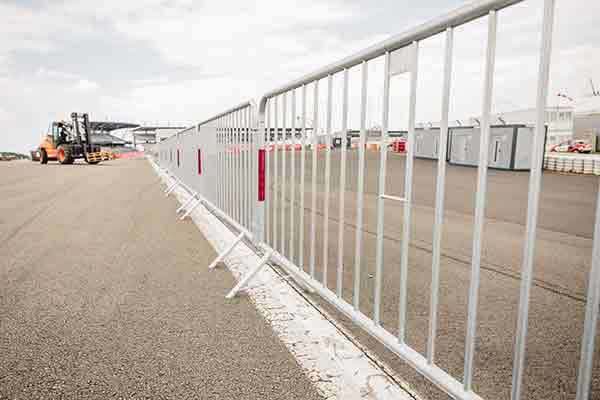Introduction:
Construction site fencing plays a critical role in maintaining safety, security, and privacy in construction projects. As temporary barriers, these fences provide essential protection by preventing unauthorized access, minimizing the risk of accidents, and safeguarding valuable equipment and materials. This comprehensive guide explores the importance of construction site fencing, it’s types and materials, installation guidelines, and key considerations to ensure an effective and secure construction site.
The Importance of Construction Site Fencing:
Construction site fencing offers numerous benefits:
Security and Theft Prevention: Fencing acts as a deterrent to unauthorized entry and helps prevent theft of construction equipment, tools, and materials.
Safety and Accident Prevention: Fences create a physical barrier, keeping unauthorized individuals away from potentially hazardous areas and reducing the risk of accidents.
Privacy and Confidentiality: Fencing provides privacy, shielding sensitive information and activities from prying eyes.
Site Organization and Control: Fences define the boundaries of the construction site, allowing for better organization and control of access points.
Types of Construction Site Fencing:
Various types of fencing options are available for construction sites:
Chain Link Fencing: Durable and cost-effective, chain link fences are popular for their versatility and visibility.
Welded Wire Mesh Fencing: This type of fence offers a high level of security and is suitable for sites requiring enhanced protection.
Temporary Panel Fencing: These prefabricated panels provide quick and easy installation and are often used for temporary construction sites.
Barriers and Barricades: Barriers and barricades are ideal for controlling pedestrian and vehicle traffic on construction sites.
Privacy Screening: Privacy screens can be attached to existing fences to enhance privacy and prevent the visibility of sensitive areas.
Construction Site Fencing Materials:
Construction site fences are typically made from the following materials:
Galvanized Steel: Galvanized steel fences are corrosion-resistant and offer robust protection against intruders.
PVC-Coated Wire Mesh: PVC-coated wire mesh fences provide added durability and resistance to weather elements.
Plastic Panels: Lightweight and easy to install, plastic panels are suitable for temporary construction site fence.
Wood: Wooden fences are aesthetically pleasing and can be an excellent choice for construction sites with specific design requirements.
Installation Guidelines for Construction Site Fencing:
To ensure the effective installation of construction site fencing, consider the following guidelines:
Site Assessment: Assess the construction site to determine the perimeter boundaries, potential access points, and areas requiring enhanced security.
Permits and Regulations: Check local regulations and obtain necessary permits for installing construction sites fencing.
Proper Placement: Install fences along the perimeter of the construction site, ensuring a secure and clearly defined boundary.
Gate Placement: Determine strategic locations for gates to facilitate authorized access while maintaining site security.
Secure Anchoring: Use sturdy posts or supports and secure them firmly in the ground to prevent fence movement or tampering.
Signage and Warning Labels: Display appropriate signage and warning labels on the fencing to alert individuals of potential hazards and unauthorized entry.
Regular Inspection and Maintenance: Regularly inspect the fencing for any damages, wear, or breaches. Repair or replace any compromised sections promptly.
Considerations for Construction Site Fencing:
While installing construction sites fencing, keep the following factors in mind:
Visibility and Monitoring: Choose a fencing type that allows for adequate visibility and monitoring of the construction site.
Height and Strength: Select a fence height and strength appropriate for the level of security required.
Access Control: Implement access control measures such as gates, locks, and key card systems to regulate entry and exit points.
Safety Signage: Clearly display safety signs and instructions to promote a safe working environment.
Lighting: Consider installing adequate lighting around the fencing to ensure visibility during nighttime hours.
Environmental Impact: Opt for eco-friendly materials and practices to minimize the environmental impact of the construction sites fencing.
Conclusion:
Construction site fencing serves as a crucial element in maintaining safety, security, and privacy in construction projects. By understanding the importance of construction site fence, choosing the appropriate type and material, following installation guidelines, and considering key factors, construction professionals can establish a secure and efficient construction site. Prioritizing construction sites fencing contributes to a safer work environment, protection of valuable assets, and successful project completion.

